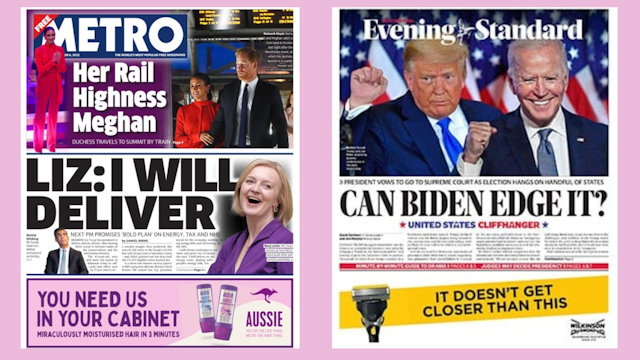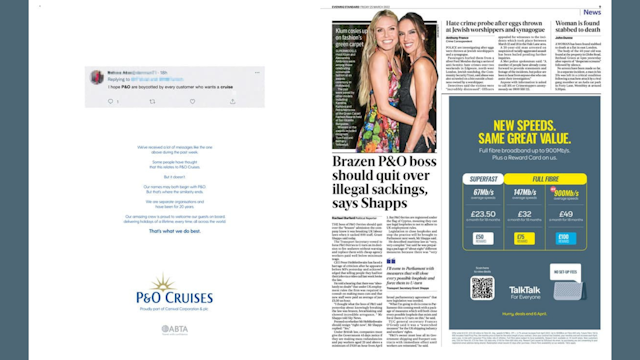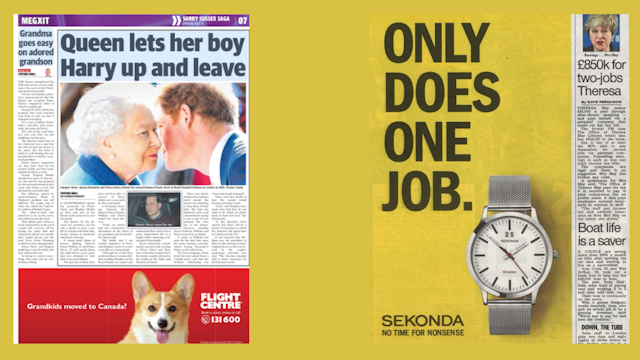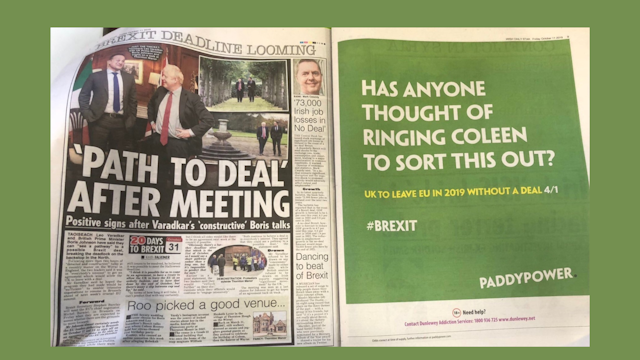Why reactive print ads are still an attention-grabbing marketing tactic
Why are so many quick-thinking tactical ads still executed in print when there’s a whole world of social out there? Following Asda’s ‘Romaine Calm’ hit, we take a look.
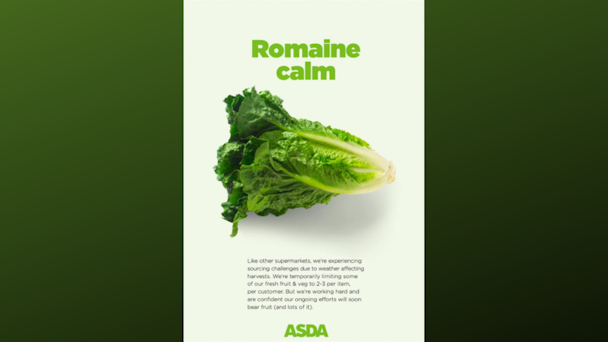
How to execute the perfect reactive print ad
Despite the diminishing relevance of print among modern audiences, marketers retain a special place in their hearts for a witty ad contextually placed within newsprint.
The layers of trust the medium affords, and the implied effort in getting the comms on to the page, signal to readers a worthy message. Nonetheless, why are marketers so intent on branding their most reactive work on to what is supposed to be a slow medium?
Advertisement
‘Romaine Calm’
Earlier this week, Asda communicated a new vegetable sale policy – comms that should put any reader to sleep, but didn't. Yet again, a print ad addressing a supply chain issue (looking at you KFC ’FCK’) resonated with people.
Asda, Havas, and Spark Foundry ran the ’Romaine Calm’ ad below a news story detailing empty shelves and ministerial incompetence. Asda navigated the issue with a memorable pun that flowed from print into social and online, and which was earlier this week named The Drum’s Ad of the Day.
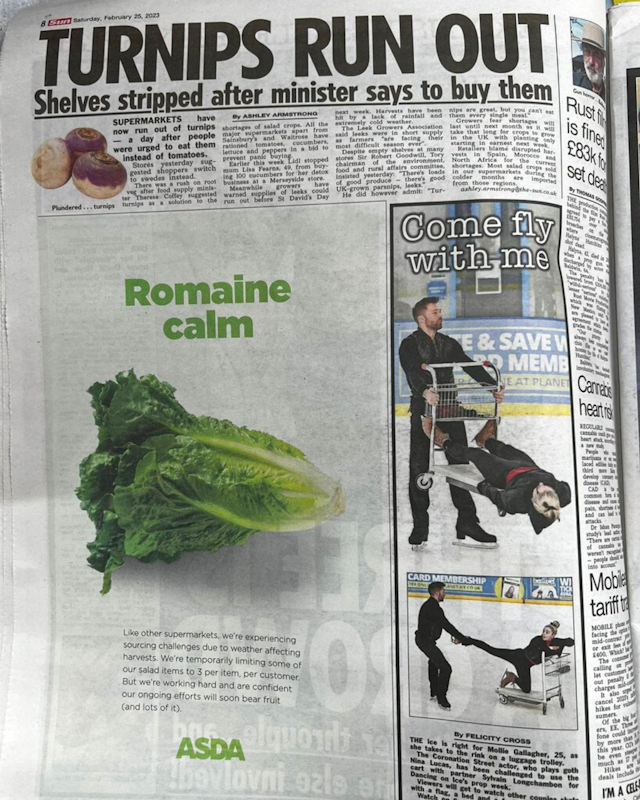
Speaking to The Drum, Daisy Bard and Orla O’Connor (yes, creative duos speak as one) revealed the ad took around 48 hours to turn around, prompted by a WhatsApp message from Havas executive creative director Dan Cole who identified the newsjacking opportunity.
The pair believe there is ”nothing more British than a cleverly crafted pun,” adding that ”they unite people”. Below said pun is some well-penned policy that would have died in any other context.
The duo explain: ”Comms like this that are reassuring are important and help to stem feelings of panic in fractious times. Getting the tone of voice right is important too.”
The campaign was a one-off piece, not weighed down by any other obligations or media plan. The pair, as a result, didn’t feel ”constrained” in how they executed it.
Advertisement
A mention next to attention
A disproportionate amount of good reactive ads referenced the Wagatha Christie scandal. The best example was easily from popcorn purveyor Butterkist, where agency St Lukes gave a memorable twist on court sketches, which was less reliant on copy.

“The papers were all over Wagatha Christie, with the courtroom drawings themselves causing as much entertainment as the case itself,” noted St Lukes’ Richard Denney last year.
Starcom’s commercial display director Nick Brown, meanwhile, adds: ”Newspapers love the opportunity to run reactive activity because they get PR benefits and it looks great on the printed page, which makes them very amenable to work with.” It was vital the ad sat next to a relevant story so readers got that instant recognition.
Another theme that last year proved fruitful for brands was Partygate. Delivery company Gorillas’ ‘Westminster Loves Popping Off’ ad in April 2022 showed a Boris-esque figure partying. If puns unite Britain, so too did condemnation of the party antics.
These brands wanted to be seen taking a stand on issues we could all relate to on some level.
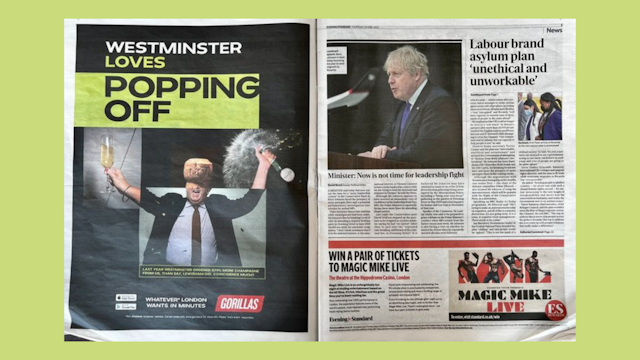
Paulo Salomao, business leader and co-founder of The Or, which created the campaign, says it went from brain to page in two days. It was a “tense” time to get the work through on time to run next to the relevant editorial, he says. “We worked with the media agency and titles to find out where the placement would be and spec everything in time.”
This was an unscripted activity, not part of the media plan. He points out that any ‘always-on’ brand “needs a tiny tactical/cultural budget left aside to seize the opportunities when they arise”. He believes it’s not just enough for brands to use paid-for communication to show who they are, they should also (when appropriate) appear in culture.
Suggested newsletters for you
What the papers say
Owen Griffiths, commercial director for The Sun, the title that ran the Romaine ad, says: “The best ideas come from having all parties in one room alongside our in-house creative team and our editorial team. This allows us to push deadlines right to the end, with print being submitted moments before the pages are sent to the printers.”
He believes a good reactive ad manages to find the right balance between humor and informing the reader and must remain in line with the tone of the newsbrand. The biggest challenge, however, is getting creative through the client, editorial and legal in a timely manner – although that can be done in a few hours if needed.
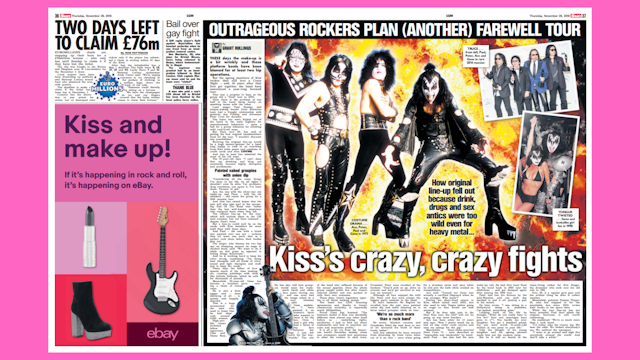
But, he stresses, brands are also landing strong reactive ads in digital too. It’s not just a print gimmick. The newsbrand’s Nucleus data platform tells the team who’s reading what (and how it makes them feel). It has been delivering reactive content and tailored ads alongside its online presence for years. This has helped it plug brands into thematic conversations, such as putting eBay into conversations around Christmas in 2022 or Tesco into I’m a Celebrity: with the title privy to the show’s results before airing, it could tailor content and creative with BBH in advance.
Still, for many marketers, nothing beats seeing an idea come alive in print.
Tips for making reactive ads
Paul Mallon is the head of special ops at Lucky Generals and has turned around countless reactive print ads in his time. He says: “There’s a weird satisfaction and pride in getting away some good reactive creative, especially in print given the rigors involved compared with doing a social post where the bar is lower.
“Even if print circulations have declined, there’s a power for your brand in seeing a well thought out piece of sharp-witted creative, placed contextually beside some editorial.”
He believes there is “higher value“ to print readers than social readers – “consumers who go out and actively seek that product to buy it”. But, he warns, it can be difficult to get work out. “One bad apple as a naysayer can shelf the whole process because you’ve got less than 24 hours to be reactive in print or there’s no point.”
Meanwhile, Bard and O’Connor think it is always worth thinking reactively and sending over ideas to the boss. WhatsApp appears to be their forum of choice: “The worst they can say is no and, even if they do, they might say yes next time.”
But, they stress, the most important element is speed. A two-day turnover gives the world of social media time to not only make the same joke/pun, but also to tire of it and move on. If it can’t be delivered in a timely manner, it should ’romaine’ on the drawing board.
The best of the rest
As a reward for reaching the end of the article, here are some more great reactive print ads.
